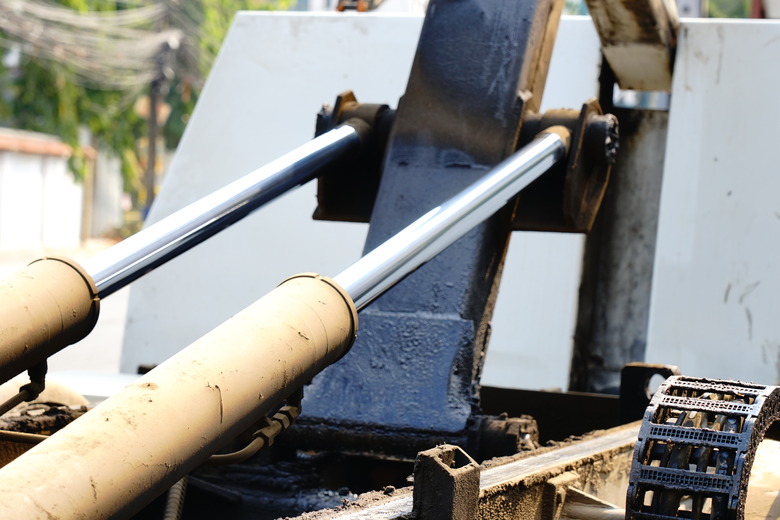How To Size A Pneumatic Cylinder
Pneumatic cylinders are commonly used to convert the energy provided by a compressed air source into usable kinetic energy. The cylinder rod extends and retracts to create a desired motion. The rod will extend and retract with a certain force, which is based on the diameter of the cylinder, and the pressure of the compressed air. This guide will teach you how to choose a cylinder of the correct size, based on your application.
Step 1
Determine the amount of force required, and the length of the stroke for your application. I'll use an example: we want to push a box 16" with 250 lbs of force.
Step 2
Determine the air pressure you will be using. This is the pressure you have available at the cylinder. In my example, I'll use 80psi (pounds per square inch).
Step 3
Using the formula F=P*A, where F is force, P is pressure, and A is Area, determine the area of the piston (inside the cylinder) that will be required. From that formula, A=F/P. In my example, this would be: A=250/80, so A = 3.125 in^2 (square inches).
Step 4
From the area required, we will now calculate the diameter of the cylinder (commonly referred to as the BORE). First take the square root of the area A, then multiply that by 1.1284. In my example, the square root of 3.125 is 1.7678. Now we multiply that by 1.1284 to get a diameter of 1.995.
Step 5
We have now sized the pneumatic cylinder to our application. We would need a cylinder with a 1.995" BORE x 16" STROKE. Note that cylinders are only available at specific Bore diameters, so in my example, you would order a 2" bore. If you find that you have more force than you want, you can always just turn the pressure down until you get the desired force.
Cite This Article
MLA
Contributor, . "How To Size A Pneumatic Cylinder" sciencing.com, https://www.sciencing.com/size-pneumatic-cylinder-5115743/. 23 June 2009.
APA
Contributor, . (2009, June 23). How To Size A Pneumatic Cylinder. sciencing.com. Retrieved from https://www.sciencing.com/size-pneumatic-cylinder-5115743/
Chicago
Contributor, . How To Size A Pneumatic Cylinder last modified March 24, 2022. https://www.sciencing.com/size-pneumatic-cylinder-5115743/
